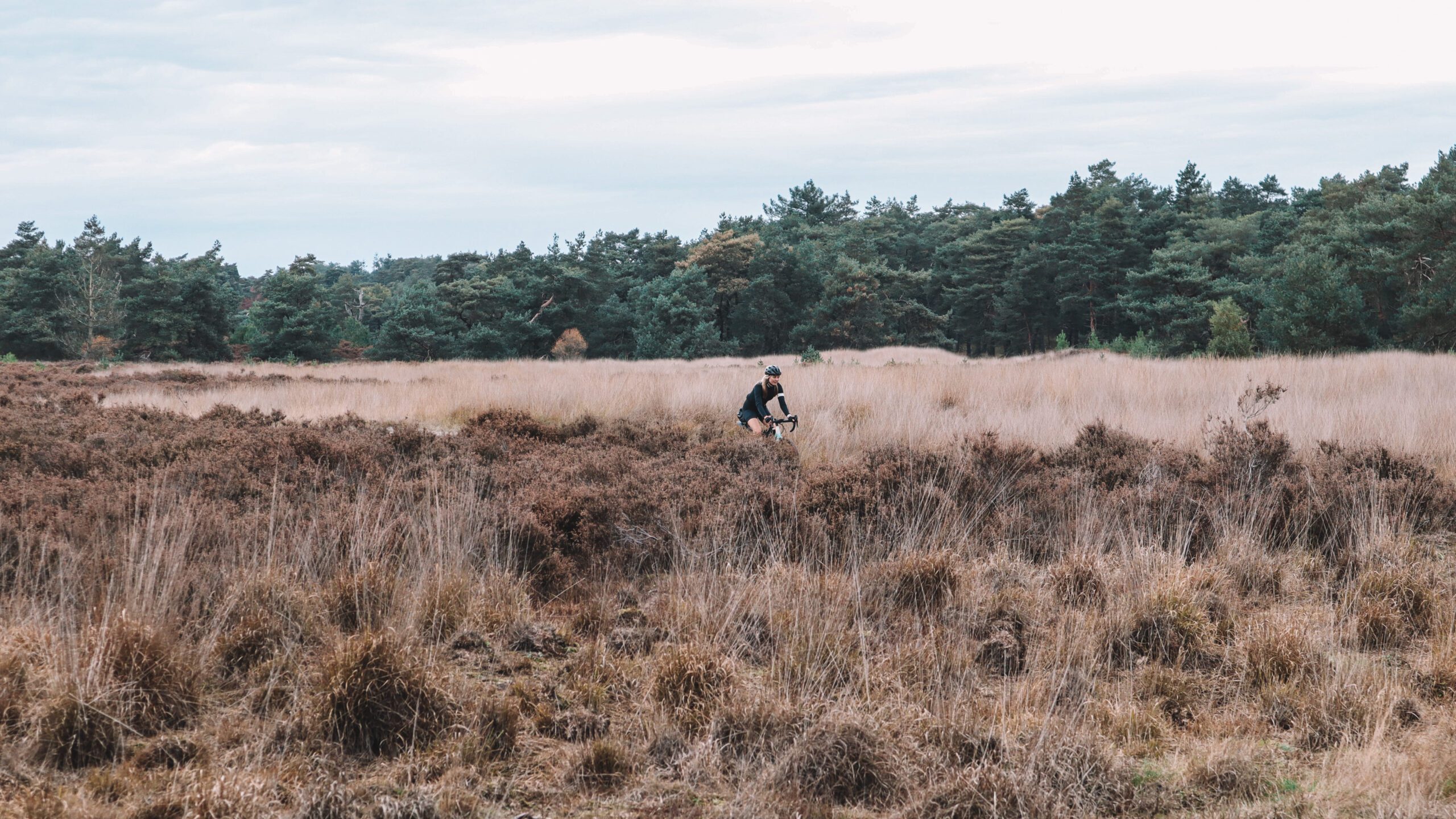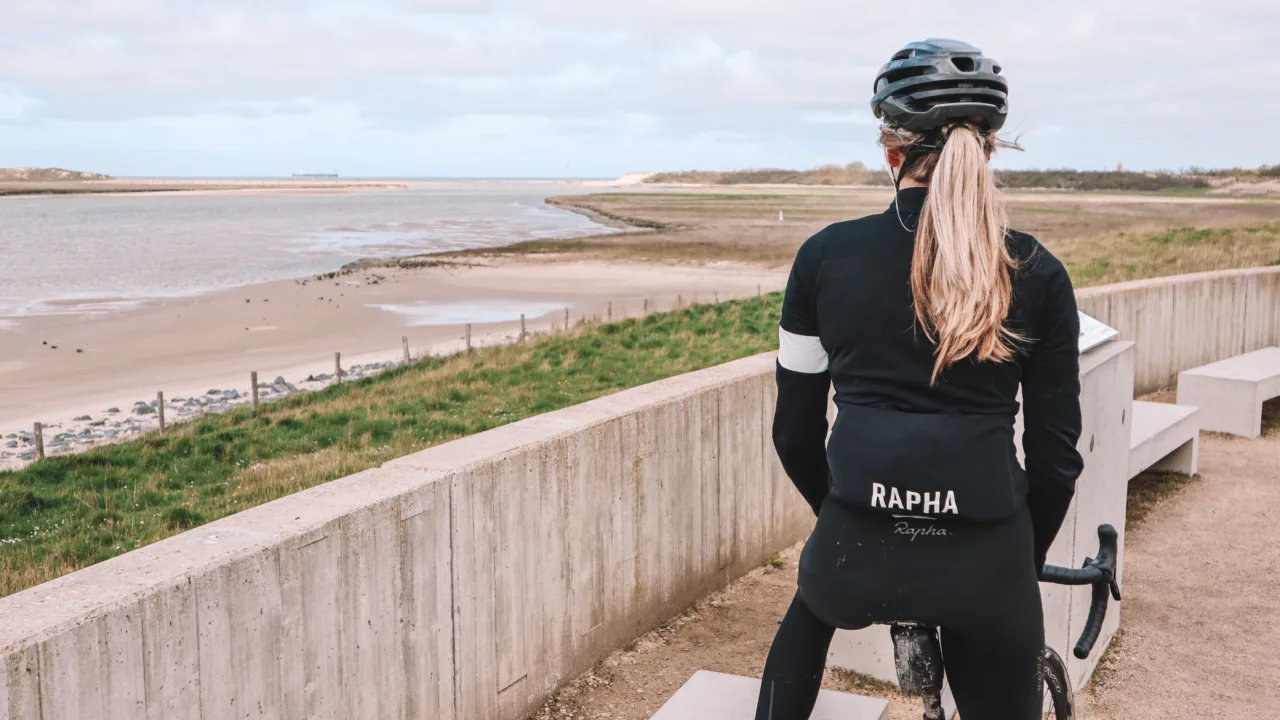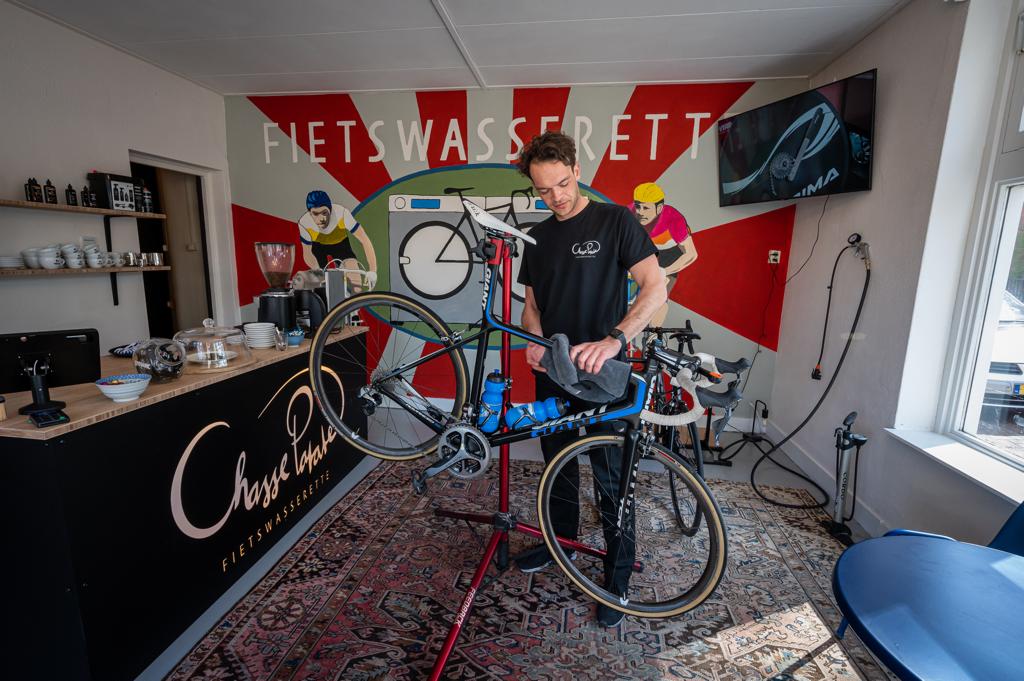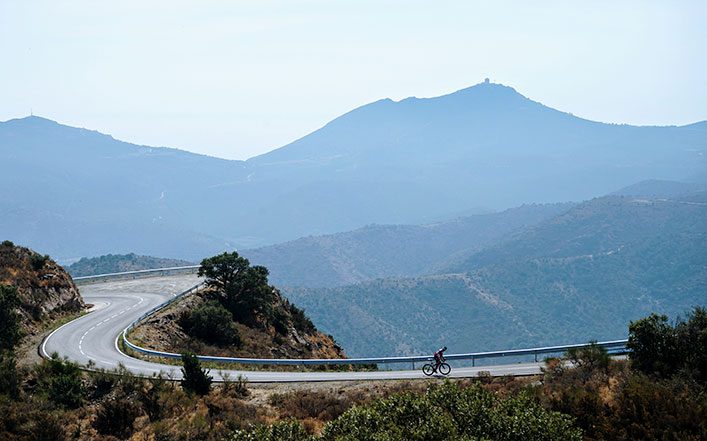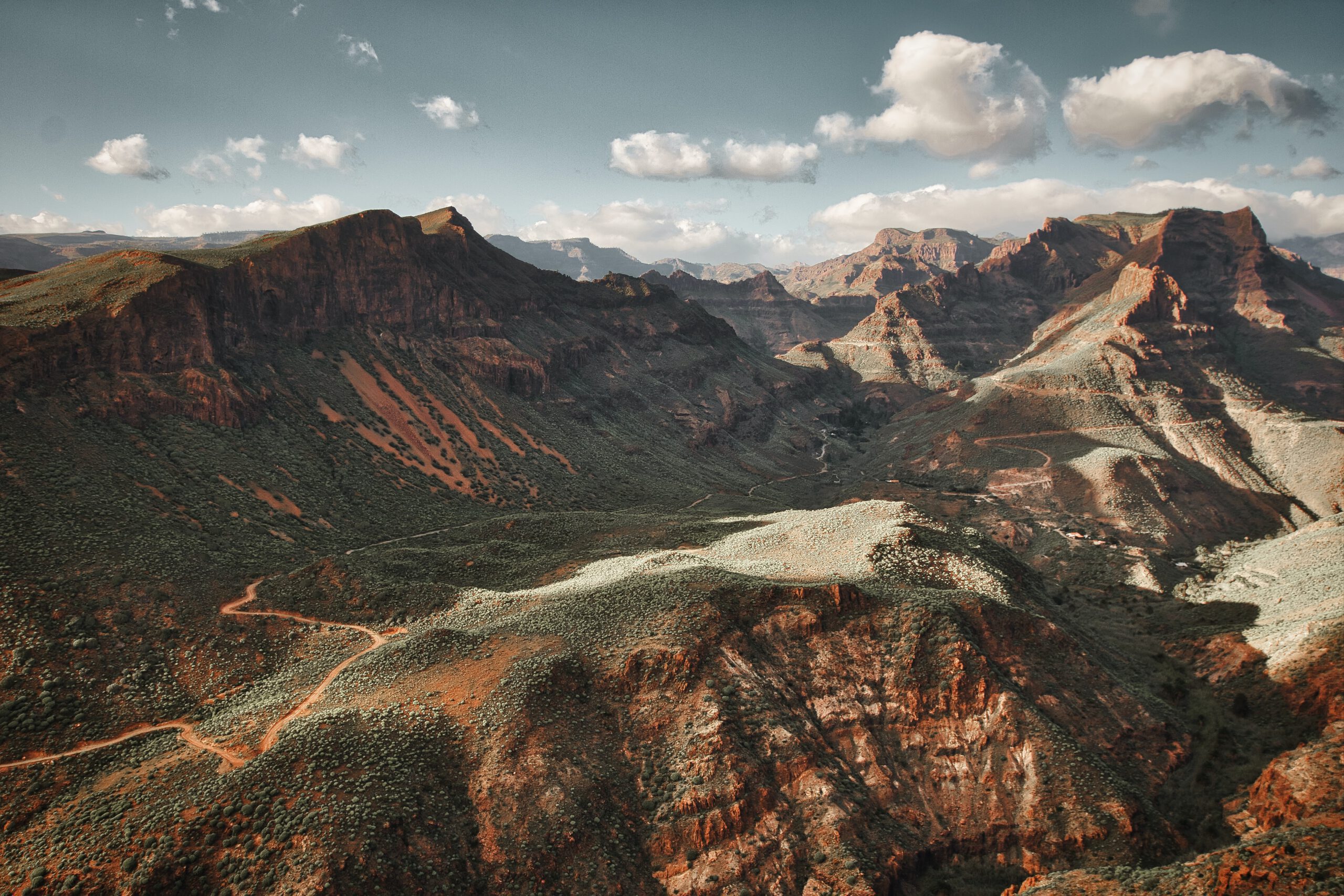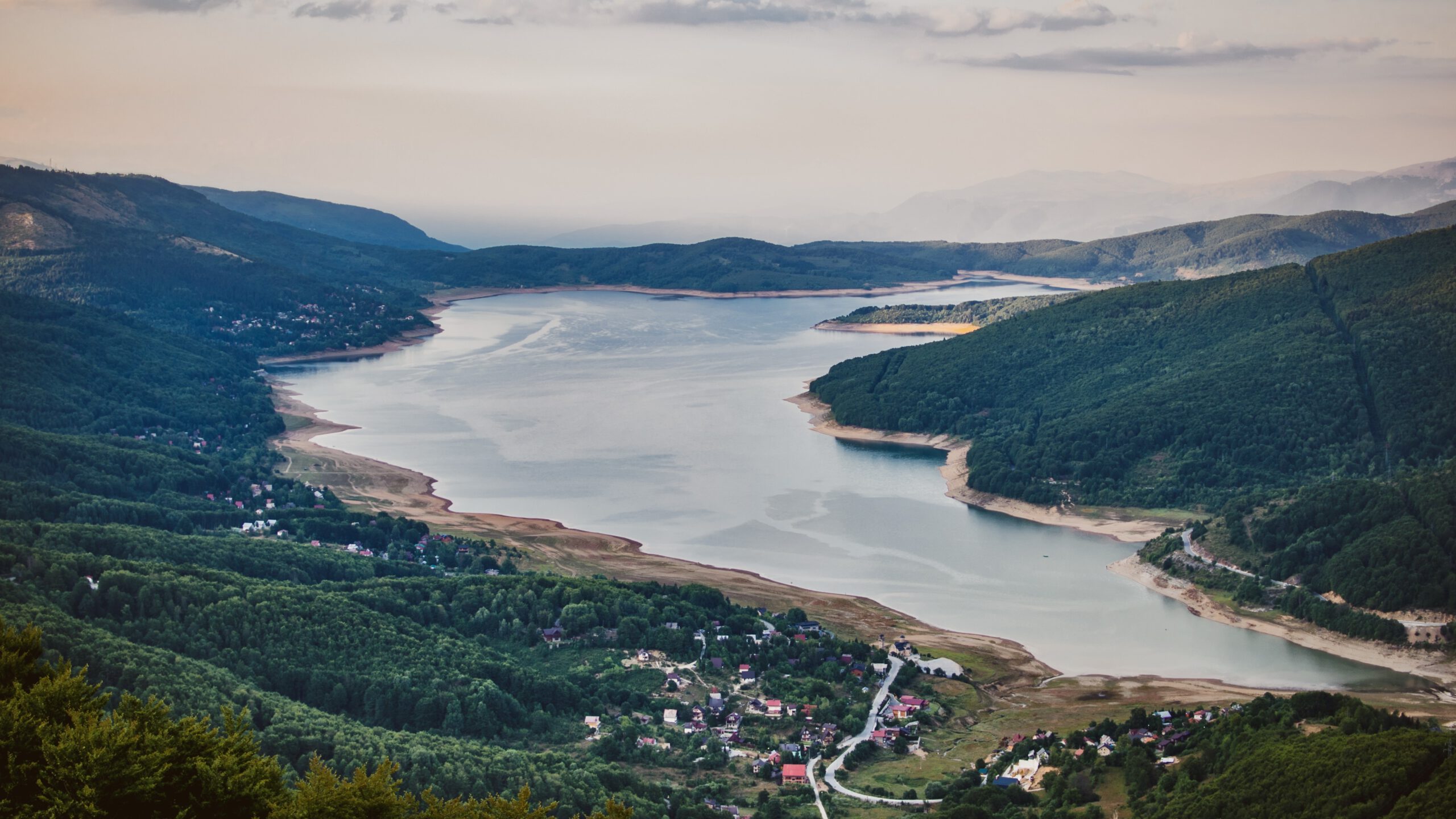It is a cold, bleak Saturday morning in February. The time when you would actually prefer to be warm inside. Even as a cyclist. But when you are at the bottom one of the most beautiful climbs in Spain stands, you know there is only one thing to do: cycle. After all, the Lagos de Covadonga climb is a special one. Not just because of the beautiful mountain lakes at the top, or thanks to its regular return to the Tour of Spain. Because what far from every non-Spaniard knows is that this climb takes you through a mountainous area where perhaps one of the most important events in Spanish history took place.
Text: Maks Groeneveld | Photography: Maks Groeneveld, Jeffrey Wiese & AdobeStock
Lagos de Covadonga ascent: statistics first
The climb to the top (it's a round trip) is 19 kilometres long - or 13, if you take the village of Covadonga as your starting point. In 19 kilometres bridge 1130 altimeters. The average gradient is just under 6%. But make no mistake about that. After 6 kilometres, in Covadonga, the real work starts. It is then 11 kilometres of buffeting with an average gradient of over 8%. That's because of some really steep sections. Watch the Vuelta back and you will see that even the pro riders have a tough time on the sections above 16%. The most challenging part of the climb, the Segment La Huesera, is seven kilometres from the finish line and has a average gradient of 15% over a distance of 800 metres. Whew! The final kilometres are a lot flatter. There is even a descent before the official summit.

A climb with history
Quite a lot has happened on and around this climb. For that, we first go very far into history. Indeed, in the year 722, the Battle of Covadonga place, in which Christian troops led by Pelagius of Asturias (Pelayo) defeated the Moorish troops. The Moors were chased into the mountainous landscape and perished there. This was the first recapture of a territory occupied by the Moors, and as a result this area is now seen as the site of the Reconquista ever began. That makes the climb and the rugged landscape even more special, right?
Lagos de Covadonga in the Tour of Spain
The climb to Lagos de Covadonga is one of the most iconic climbs in the Vuelta a España. Since it was first recorded in 1983, the climb has been included in the course 24 times (through 2024). It is a climb that is often determining the standings. This is how Primoz Roglič in 2021 here on stage 17 after a thrilling duel with Egan Bernal. Roglič not only took the stage win, but also recaptured the red leader's jersey and secured his third consecutive Vuelta victory.
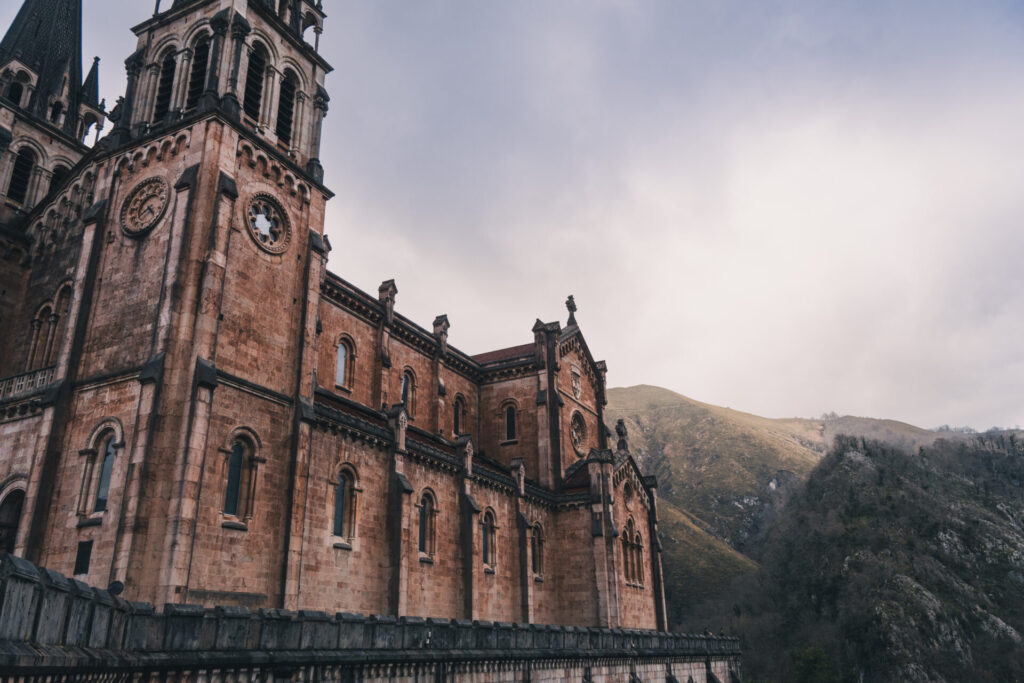

19 miserable but terribly beautiful kilometres uphill
To get ahead of ourselves: this climb was terrible. Terribly miserable. Terribly cold in February. But also terribly beautiful. With terribly rugged, beautiful views. And how I would terribly love to do it again with slightly higher temperatures.
The first stretch is doable. Until the village of Covadonga, the road runs valsplat. Slowly you see the Basilica of Covadonga get closer. This basilica is dedicated to the Virgin of Covadonga, the patron saint of Asturias. It is an important place of pilgrimage and a symbol of the Reconquista. Many a religious cyclist makes a cross here before the real climb - almost immediately after the basilica - starts. Will the Colombian Nairo Quintana then helped him to his stage win in 2016?
After the basilica, the climb through the forest begins. Hairpin here, steep bit there... It keeps going nicely. But it is not really very beautiful yet. Perhaps this is also due to the trees that are not yet in bloom. After about four kilometres, the scenery starts to change. The road meanders past vast mountain meadows and abandoned forest cottages that seem to come from another time.
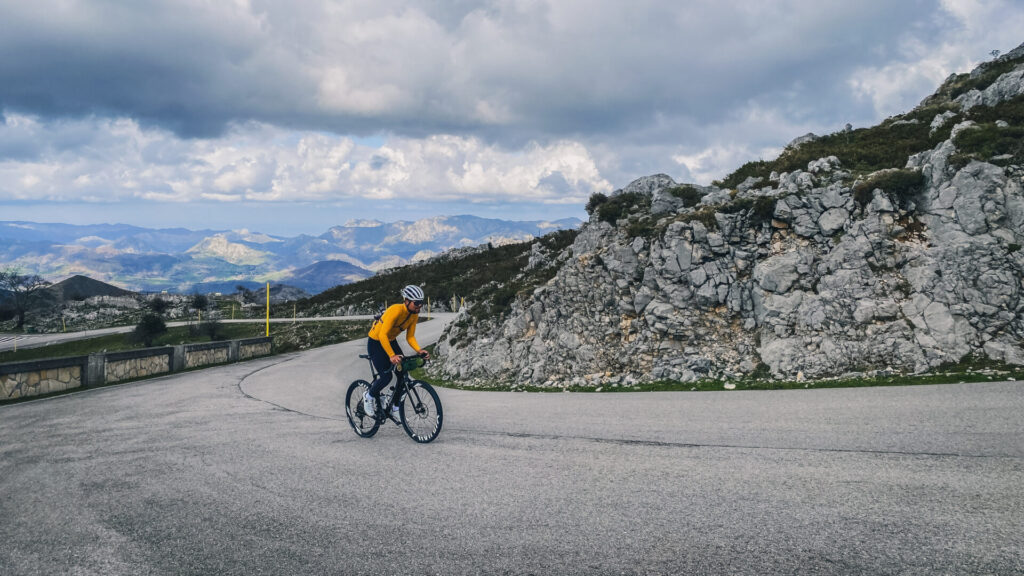
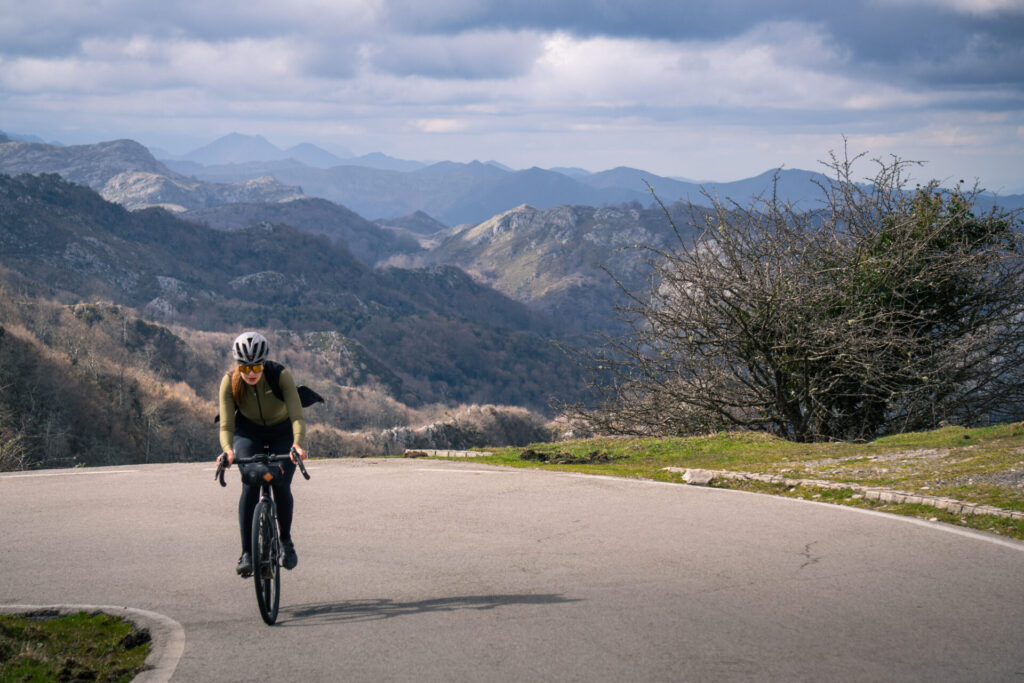
Segment La Huesera: The Bone Crusher
Then suddenly there is the first beautiful view. And fortunately so, because you can use a little distraction from now on. For this is also where segment 'La Huesera' starts. The segment's name literally means 'The Bone Crusher'. Does that say enough? 800 metres with a average gradient of 15%. It is the segment on which pro riders break during the Grand Tour or scraping together their last energy to attack. I think it's clever. Because this segment is lousy. Fortunately, I am the Bone crusher just too fast, and I still have some energy in my legs for the rest of the climb.
After La Huesera, you can recover very briefly. After that, there is still twice a vicious piece waiting for you. But fortunately, the views only get better too. After a hairpin bend, suddenly the snow-capped peaks of the Picos de Europa in sight. It may be cold in February, but how beautiful it is to see so much snow on the mountains at this time of year. It feels like a reward, even though we haven't even made it to the summit yet. Fortunately, you will also see snow on the peaks in spring and autumn. And with a bit of luck, you can even enjoy this view in summer.
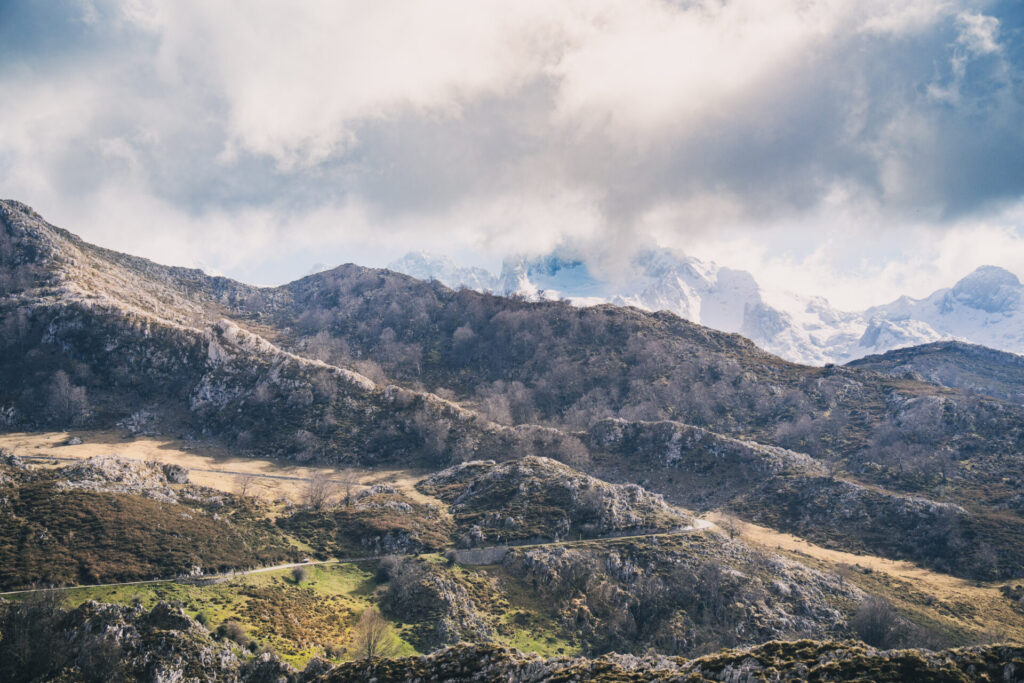
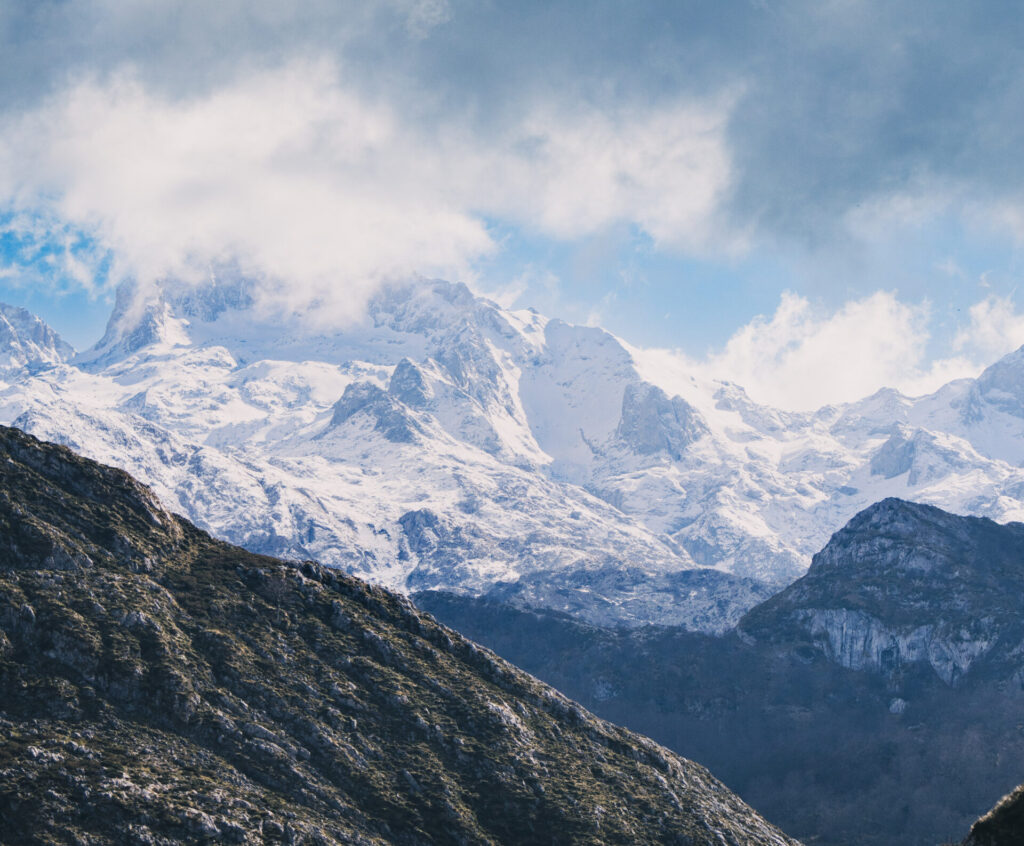
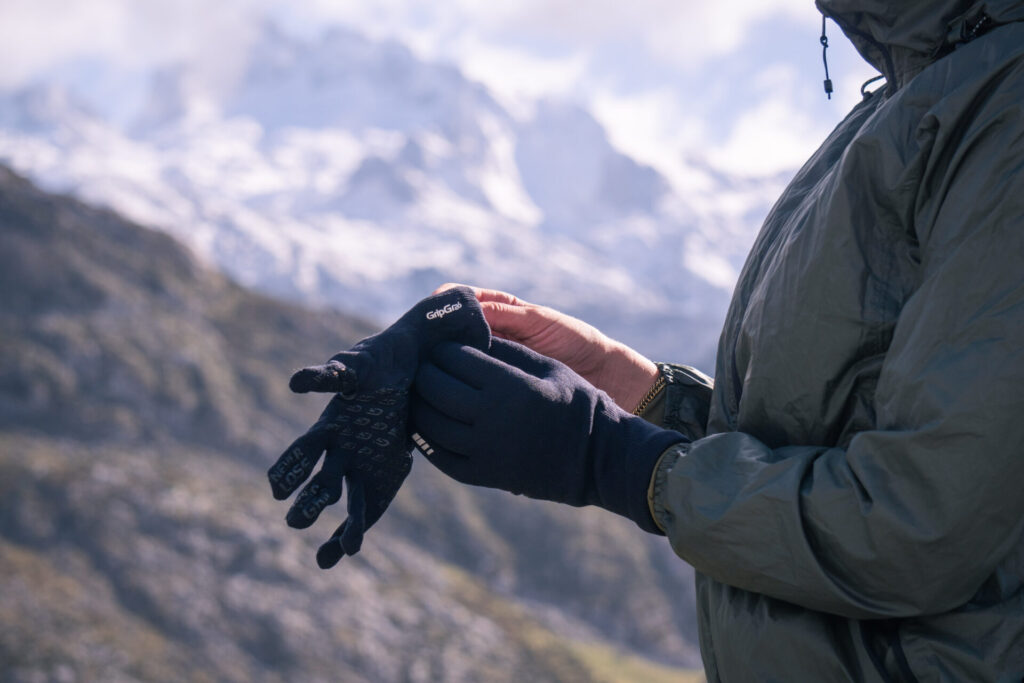
And then the top. Or just barely?
And then, just before the summit... it begins to snow lightly. The risk of cycling in the mountains in February: the weather can change just like that. We cycle steadily for a while longer. Without seeing at least the first lake of Covadonga, the climb feels unsuccessful. So there, after another 3 kilometres or so of climbing, we stop. It feels like a sure summit, because from here you descend for just under a kilometre to the second lake, before climbing another kilometre to the official finish. But being at the top - like being on top of a col - feels good. It's beautiful.
For a brief moment, we look at the lake and the beautiful snow-covered peaks. Then it is time to put on gloves and a wind jacket. Although the snowfall has stopped now, we don't want to risk getting slippery on the descent.
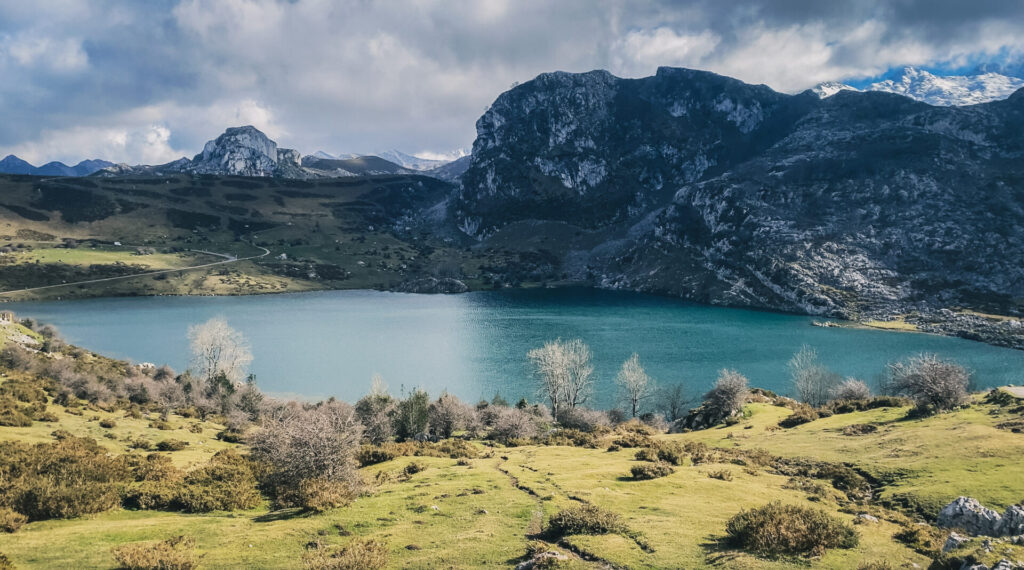
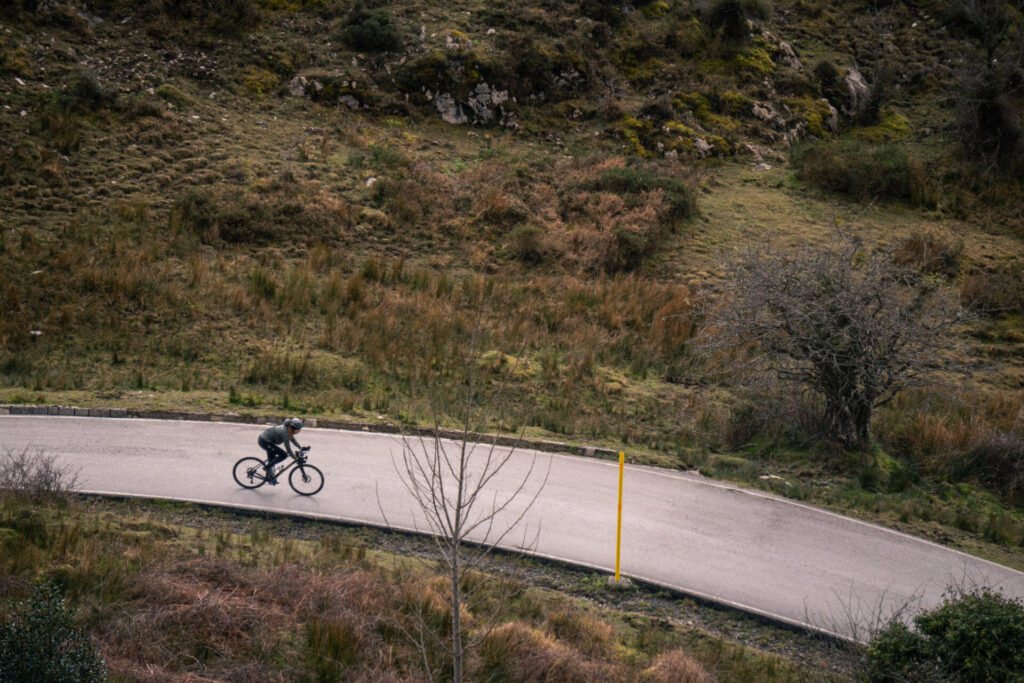
Bike yourself?
The climb to Lagos de Covadonga should definitely be on your list of must-do climbs. Like these other tough climbs of the Vuelta, by the way. It is best to visit this area between spring and autumn. Then you can be sure that this - and all the other beautiful climbs in the region - are snow-free. After all, there is plenty of beauty to discover in northern Spain and the Picos de Europa. Save your route to the beautiful lakes of Covadonga below. My final tip? Don't forget to dwell on the history in this area. Both the stories about the Battle of Covadonga and the heroic duels still fought here today in the Vuelta make this climb extra special.

